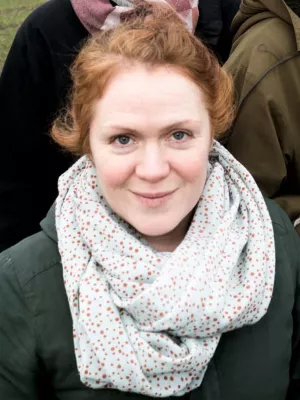
Edith Hammer
Universitetslektor

Bacterial community characterization by deep learning aided image analysis in soil chips
Författare
Summary, in English
Soil microbes play an important role in governing global processes such as carbon cycling, but it is challenging to study them embedded in their natural environment and at the single cell level due to the opaque nature of the soil. Nonetheless, progress has been achieved in recent years towards visualizing microbial activities and organo-mineral interaction at the pore scale, especially thanks to the development of microfluidic ‘soil chips’ creating transparent soil model habitats. Image-based analyses come with new challenges as manual counting of bacteria in thousands of digital images taken from the soil chips is excessively time-consuming, while simple thresholding cannot be applied due to the background of soil minerals and debris. Here, we adopt the well-developed deep learning algorithm Mask-RCNN to quantitatively analyze the bacterial communities in soil samples from different locations in the world. This work demonstrates analysis of bacterial abundance from three contrasting locations (Greenland, Sweden and Kenya) using deep learning in microfluidic soil chips in order to characterize population and community dynamics. We additionally quantified cell- and colony morphology including cell size, shape and the cell aggregation level via calculation of the distance to the nearest neighbor. This approach allows for the first time an automated visual investigation of soil bacterial communities, and a crude biodiversity measure based on phenotypic cell morphology, which could become a valuable complement to molecular studies.
Avdelning/ar
- Biologiska institutionen
- Matematik LTH
- Institutionen för biomedicinsk teknik
Publiceringsår
2024-07
Språk
Engelska
Publikation/Tidskrift/Serie
Ecological Informatics
Volym
81
Dokumenttyp
Artikel i tidskrift
Förlag
Elsevier
Ämne
- Soil Science
Nyckelord
- Bacterial traits
- Microbial image recognition
- Microfluidics
- Morphological biodiversity
- Segmentation
- Soil bacterial cell counting
Status
Published
ISBN/ISSN/Övrigt
- ISSN: 1574-9541